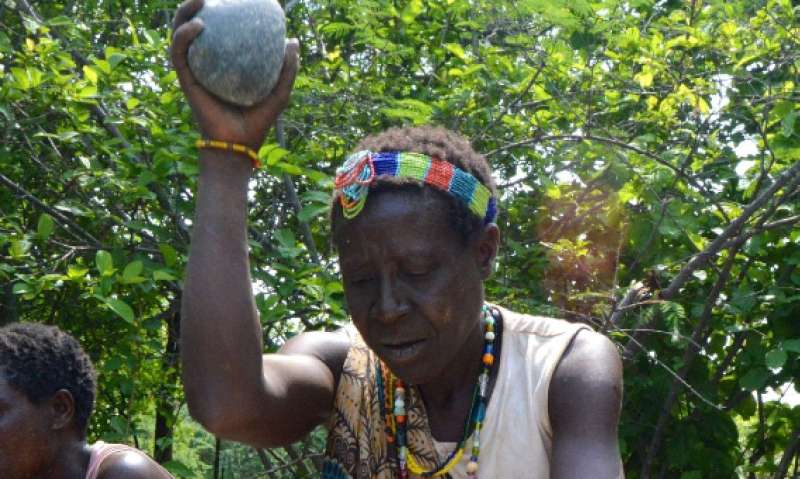First 3-D analysis of the stone tools of African hunter-gatherers

Scientists from the CENIEH have published a paper on the use of stones to process baobab by the Hadza people, whose results suggest that the wear identified might be detectable in the archaeological record
Alfonso Benito-Calvo and Laura Sánchez-Romero, from the Digital Mapping and 3-D Analysis Laboratory at the Centro Nacional de Investigación sobre la Evolución Humana (CENIEH), have just published the first 3-D morphometric analysis of the surfaces of stone tools used by the Hadza, one of the last groups of hunter-gatherers in Africa, in the Journal of Archaeological Science Reports.
In collaboration with researchers from universities in Spain, the United States and the United Kingdom, the CENIEH team has studied a series of stones used as tools to process baobab by groups of Hadza, of Tanzania, whose results suggest that the wear identified might be detectable in the archaeological record.
Innovative 3-D techniques were used, which have allowed the morphometric variables to be calculated, as well as analysis of the characteristics and effects on the surface of these stones, in such a way that the changes caused by use could be identified and quantified.
"Thanks to the quantification of the morphological variability of the surfaces of those stones following their use to process baobab, we have been able to carry out a precise macroscopic identification of the type of use made," explains Benito Calvo.
These experimental studies offer us an approach to learning about how human populations in the Paleolithic lived, because groups like the Hadza still retain activities and ways of life very similar to those that might have been found in the most primitive human groups.
More information: Alfonso Benito-Calvo et al. 3D 360° surface morphometric analysis of pounding stone tools used by Hadza foragers of Tanzania: A new methodological approach for studying percussive stone artefacts, Journal of Archaeological Science: Reports (2018). DOI: 10.1016/j.jasrep.2018.06.003
Provided by CENIEH





















